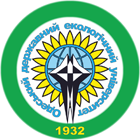Authors: M.Y. Romanchuk, O.S. Lyashchenko
Year: 2015
Issue: 19
Pages: 95-99
Abstract
Introduction: The Danube River is one of the largest rivers in the world that crosses 10 European countries. The Danube water is used for irrigation, navigation, fisheries’ needs and is a major source of recharge Danube lakes‘ water. There is the Danube Biosphere Reserve in Danube river’s estuarine area. Therefore it is important to define the character is tics of the distribution of the Danube’s annual runoff.
The purpose of this publication – is to clarify the nature of long-termand intra fluctuations of the annual flow during 50 years, namely from 1960 to 2010 due to the three hydrosections in: Reni, Izmail and Vylkove. Results of the research: The settlement period for all positions is presented as a single cycle fluctuations of average annual run off, which consists of a abounding phase during the interval of 1960-1982 (n1 = 22) and a dry one–during range of 1982-2010 (n2 = 28). In its long-term dynamics, average water discharge along the river has the same type. In intra annual distribution of monthly water consumption are clearly stood out the shallow period (January-February and August – December) and the high-water (March – July) period. The coefficient of variation Cv, the correlation between asymmetry and variation coefficient Cs / Cv, calculated using the method of moments during the year are characterized by the presence of negative trends. Conclusions: The results can be used directly in the calculation of monthly run off characteristics of different probability of exceedance within the lower reaches of the Danube river and in the implement of the Danube water exchange in lakes
Tags: hydrological regime; modular factors; river flow; the rate of flow; water cycle; тренд
Bibliography
- Mikhailov V. N. Gidrologiia del’ty Dunaia [Hydrology of the Danube Delta]. Moscow: GEOS Publ., 2004. 448 p.
- Kaganer M.S. Resursi poverkhnostnykh vod SSSR. Ukraina i Moldova. Vypusk 1. Zapadnaia Ukraina i Moldova.[Surface water resources of the USSR. Ukraine and Moldova. Issue 1. Western Ukraine and Moldova]. Part.6: L’vov.: Gidrometioiz-dat Publ., 1967. 492 p.
- Gopchenko E. D., Gushlia A. V. Gidrologiia s osnovami melioratsii [Hydrology with the basics of reclamation].,. L’vov. : Gidrometeoizdat Publ., 1988. 303 p.
- Rozhdestvenskii A.V., Chebotarev A.I:. Sinopticheskie metody v gidrologii [Synoptic methods in hydrology]. L’vov. : Gidrometeoizdat Publ., 1974. 424 p.
- Shkol’nii E.P., Loєva І.D., Goncharova L.D. Obrobka i analіz gіdrometeorologіchnoї іnformatsії : navch. posіb.[ Processing and analysis of hydrometeorological information: study guide]. Odesa.: TES Publ, 1999. 600 p.
- Gopchenko E..D., Loboda N.S., Ovcharuk V.A. Gіdrologіchnі rozrakhunki [Hydrological estimates]. Odesa.: TES Publ., 2014. 483 p.
- Rozhdestvenskii A.V., Lobanova A.G. Posobie po opredeleniiu raschetnykh gidrologicheskikh kharakteristik. [Manual for the definition of the calculated hydrological characteristics]. L’vov: Gidrometeoizdat Publ., 1984. 447 p.
- Sokolovskii D.L. Rechnoi stok [River discharge]. L’vov. : Gidrometeoizdat Publ., 1968. 540 p.



